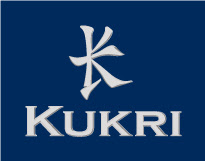
Today I had a very interesting meeting with Ken Hitchen of the British Geological Survey, who is also leader of the BGS Rockall Continental Margin Project team. He, I'm sure he wouldn't mind me saying, is as much of a Rockall nerd as I'm rapidly becoming. Following my meeting with Ken, I have been able to update the timeline on the website and confirm that two of my proposed research tasks are yet to be completed: obtaining a rock sample from Hasselwood Rock and establishing the true orientation of Rockall.
Ken was also able to correct or update a number of the facts on the website, provided me with some new avenues of potential research, as well as giving me some reading material to keep me busy! He also confirmed that the BGS will be more than happy to process any rock samples I manage to obtain during my stay on the island.
Finally, and perhaps most importantly, Ken was able to say with absolute certainty that there is no oil or gas under Rockall (although there is significant potential in the adjacent Rockall and Hatton Basins), and that the island's ownership can not be disputed as it is within 200 nautical miles of the habitable British territory of St. Kilda.









